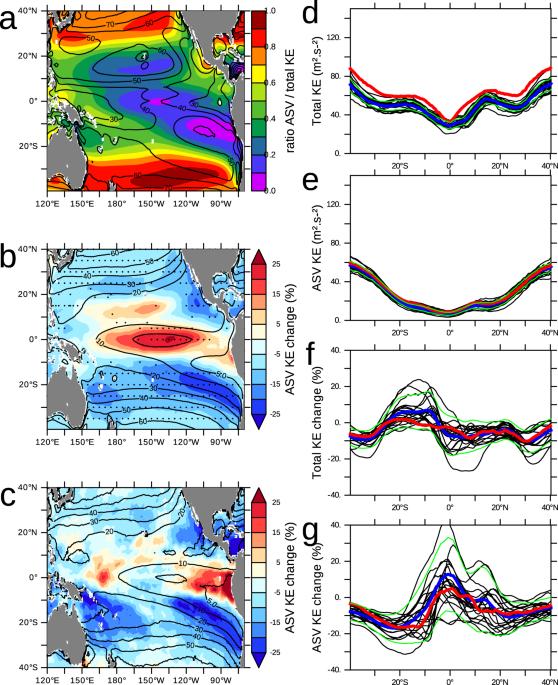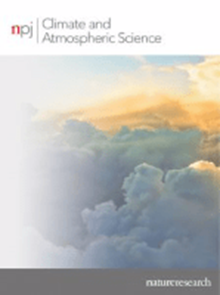未来大气天气变异性的变化减缓了热带太平洋的海洋环流并降低了初级生产力
IF 8.5
1区 地球科学
Q1 METEOROLOGY & ATMOSPHERIC SCIENCES
引用次数: 0
摘要
本研究利用大气-海洋耦合和强迫模式实验,研究了大气同步变率(ASV)未来变化对热带太平洋海洋属性和生物地球化学循环的影响。未来气候预测显示,亚热带涡旋的 ASV 年平均值将下降,而热带带的 ASV 将上升。将 ASV 保持在当前值会导致亚热带地区混合层加深,赤道地区变浅,海面温度下降。ASV 的变化会影响大尺度海洋环流以及亚热带和热带细胞的强度,从而制约赤道水上升流和热带净初级生产力。最终,这项研究强调了 ASV 在理解气候变化对海洋动力学和生物地球化学过程的影响方面的重要意义,因为气候变化导致的初级生产力下降有一半是由热带太平洋的 ASV 变化引起的。本文章由计算机程序翻译,如有差异,请以英文原文为准。

Future changes in atmospheric synoptic variability slow down ocean circulation and decrease primary productivity in the tropical Pacific Ocean
This study investigates the impact of future changes in atmospheric synoptic variability (ASV) on ocean properties and biogeochemical cycles in the tropical Pacific Ocean using coupled and forced atmosphere–ocean model experiments. Future climate projections show an annual mean decrease in ASV in subtropical gyres and an increase in the tropical band. Maintaining ASV to current values lead to a deepening of the mixed layer in subtropical regions and a shalllowing at the equator associated with a sea surface temperature decrease. The changes in ASV impact the large-scale ocean circulation and the strength of the subtropical and tropical cells, which constrain the equatorial water upwelling and the tropical net primary productivity. Ultimately, this study highlights the significance of ASV in understanding the impacts of climate change on ocean dynamics and biogeochemical processes, as half of the primary productivity decline due to climate change is caused by changes of ASV in the tropical Pacific Ocean.
求助全文
通过发布文献求助,成功后即可免费获取论文全文。
去求助
来源期刊

npj Climate and Atmospheric Science
Earth and Planetary Sciences-Atmospheric Science
CiteScore
8.80
自引率
3.30%
发文量
87
审稿时长
21 weeks
期刊介绍:
npj Climate and Atmospheric Science is an open-access journal encompassing the relevant physical, chemical, and biological aspects of atmospheric and climate science. The journal places particular emphasis on regional studies that unveil new insights into specific localities, including examinations of local atmospheric composition, such as aerosols.
The range of topics covered by the journal includes climate dynamics, climate variability, weather and climate prediction, climate change, ocean dynamics, weather extremes, air pollution, atmospheric chemistry (including aerosols), the hydrological cycle, and atmosphere–ocean and atmosphere–land interactions. The journal welcomes studies employing a diverse array of methods, including numerical and statistical modeling, the development and application of in situ observational techniques, remote sensing, and the development or evaluation of new reanalyses.
 求助内容:
求助内容: 应助结果提醒方式:
应助结果提醒方式:


